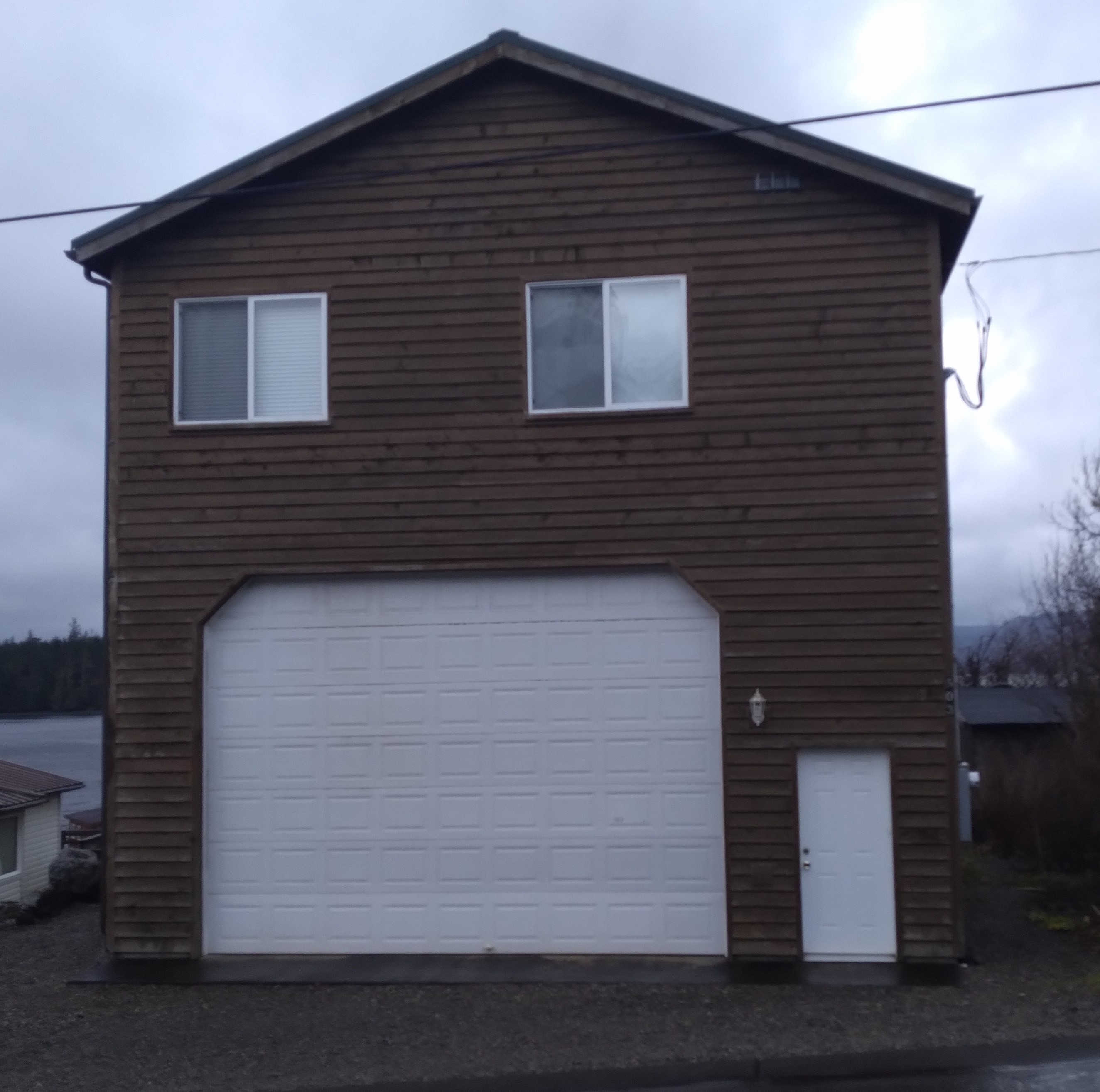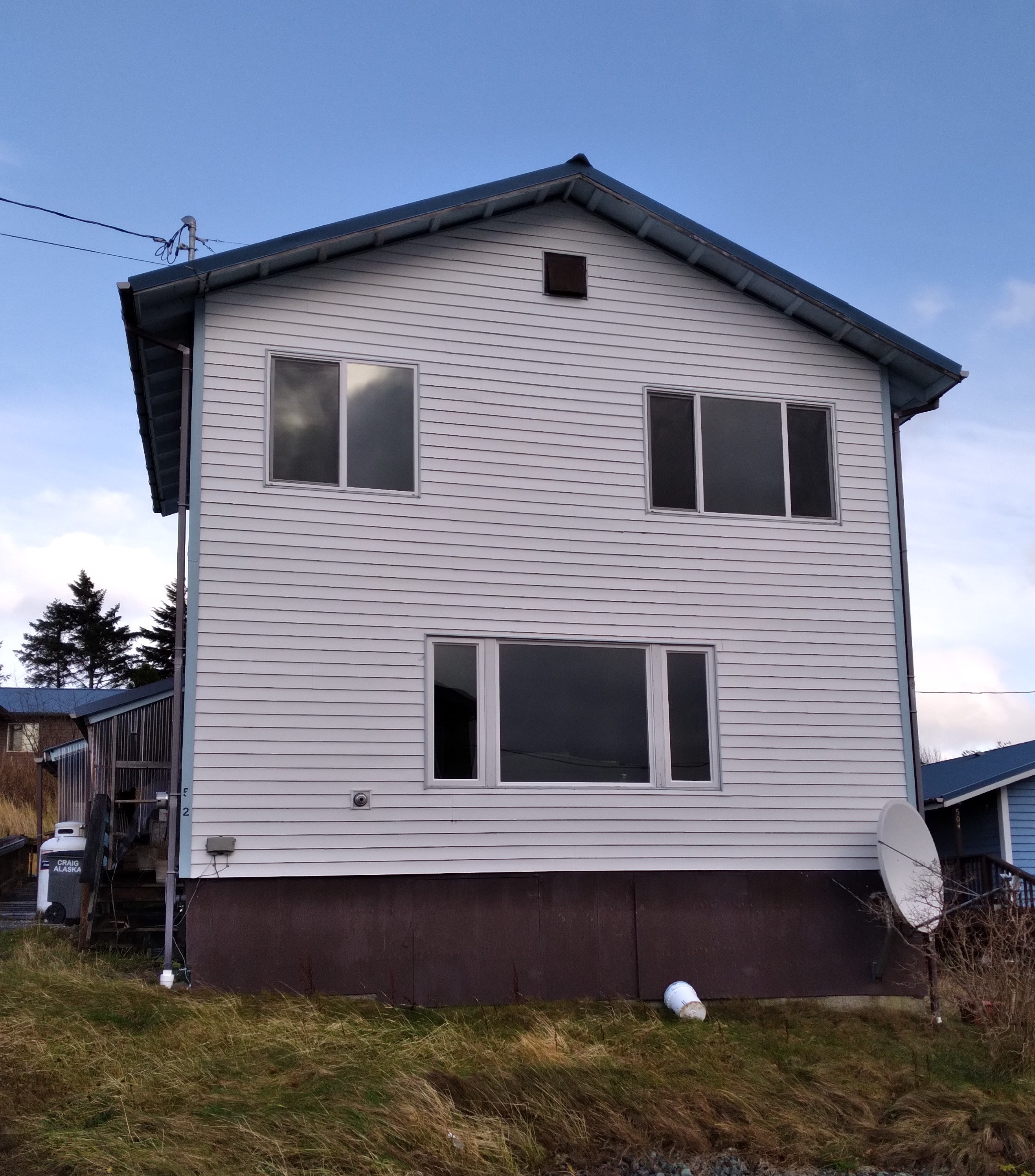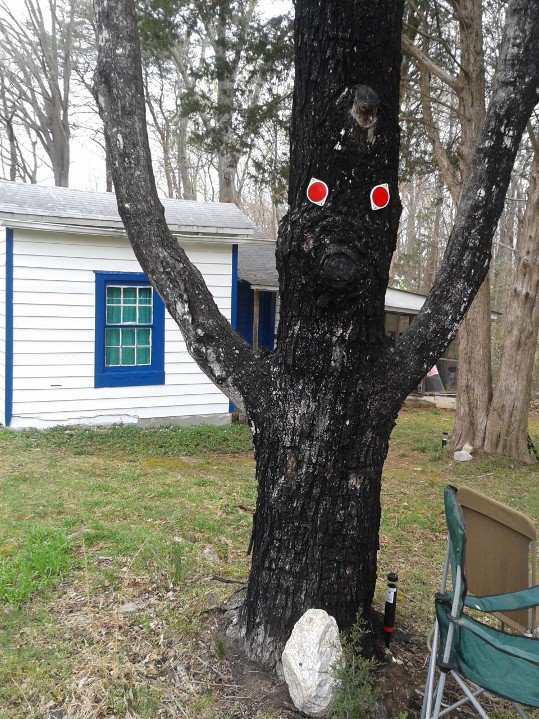Take a good look at this picture of my bathroom sink faucet, and tell me it doesn’t look just like Jar-Jar Binks:

Human brains go out of their way to construct faces where there are none. (Read more on this phenomenon on the link below.)
This house is looking at something surprising on its right:

And this house has braces, or maybe pretend vampire fangs:

The best thing about those two houses is they are right across the street from each other, and on sunny days when their windows are open, they look like they might be friends.
Sometimes, on the other hand, we can add an accoutrement or two, and come up with faces that aren’t exactly human. This is Treebeast, and he hangs out in front of my cottage in Virginia and tries to scare people:

It has been well established that we do this face-making thing, but I have often wondered why. Is this tendency a holdover from an ancient survival construct? By this I mean that, back during one of the many dog-eat-dog phases of our evolution, being able to visually separate the face of the leopard (or the enemy human) from its hiding place would have been a useful skill indeed.
Or, maybe it’s a whimsical-yet-slightly-sad effort to find connections in a lonely world, just one step removed from having imaginary friends. I’ve heard it said that we are all utterly alone within our own skins, and there are days when I utterly believe that. I wonder if Jar-Jar and Treebeast ever feel that way.
For your further edification:
Neuroscience: why do we see faces in everyday objects? – BBC Future
I’m a big (I’m talkin’ HUGE) fan of having an emergency package of googly eyes with you at all times to facilitate this.
Not that *I’d* to that, because that could be construed as vandalism… #plausabledeniability
Well there was that one time that my dear cousin (Mary McDonald; true story) and I snuck over to her neighbors and put costume jewelry and hats on the pink flamingos in the yard. . .I suppose that would count too, but it was worth it.)
Thanks again Miss Ev! It’s a fascinating subject and that BBC Futures article is great. I was especially drawn in by the discussion, late in the article, of the spirituality corollary. I found another summary of the cited study in Science Digest (https://www.sciencedaily.com/releases/2021/07/210706191620.htm). It’s shorter and comes from a different perspective. The BBC Futures article was much more thought provoking. And now I feel like I’m being watched by my webcam and my desk lamp. They may be working together.
My pleasure, Terry. As you say, it is a fascinating subject. Thanks for the additional article; I didn’t realize that this phenomenon had been so widely studied. You may want to separate the webcam and the lamp for a while.
Thanks for posting on this! There’s an Instagram account I follow solely dedicated to photographs like these (@facedbook if you’re on IG). I recently did a sensory deprivation tank float for my birthday and noticed something that may be tangentially related. When I turned off all the lights and sounds and was floating in pure silent darkness, I began seeing darker shapes and occasional purple lights. When I turned on only the music again, with no lights, the things I was “seeing” disappeared. Clearly my mind was searching so hard for patterns, it created its own!
Thanks, Helen; that tank sounds fascinating, I must try that sometime. Every day I am amazed at the things the human brain comes up with. Looking forward to seeing you all in February!.